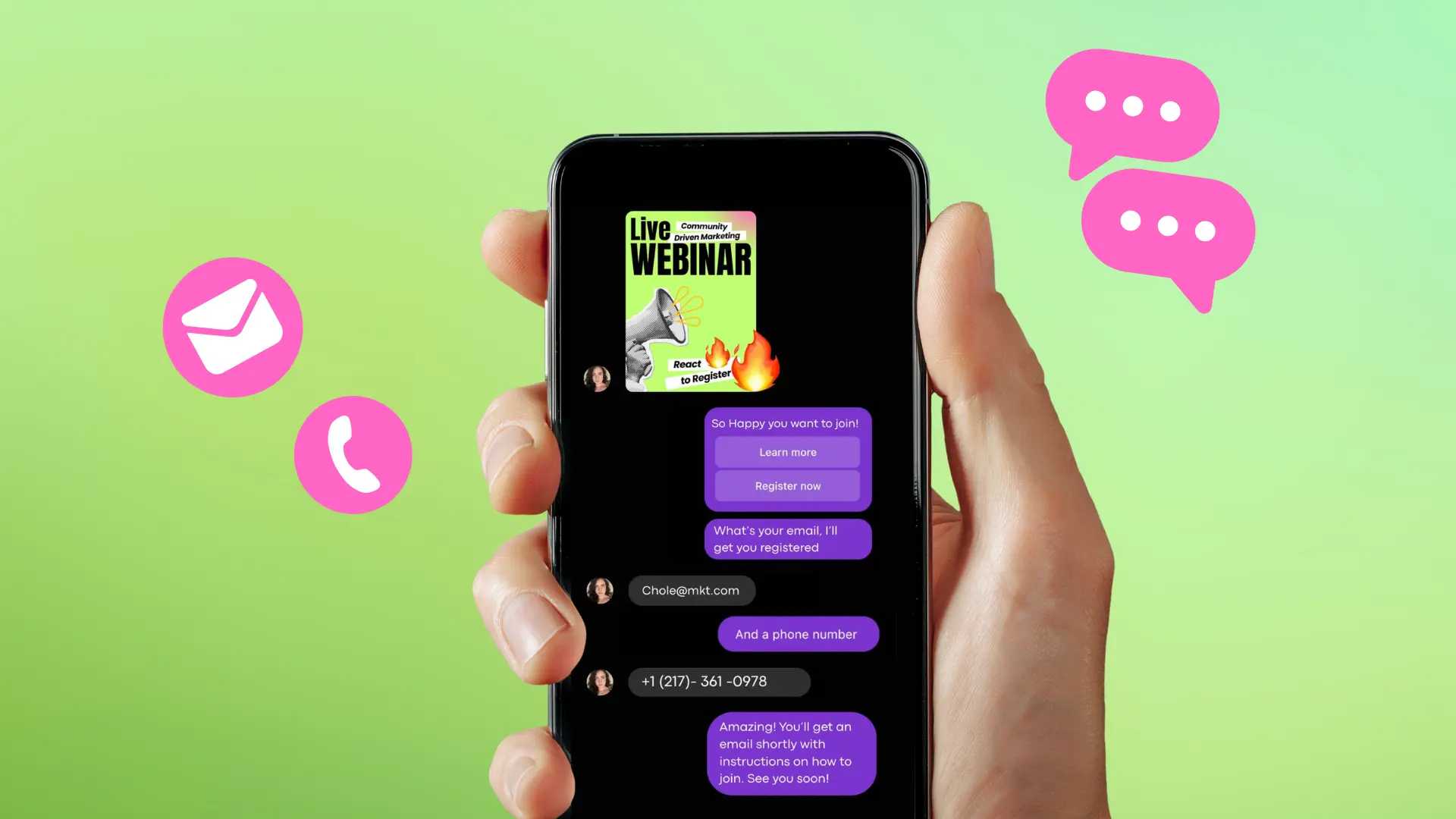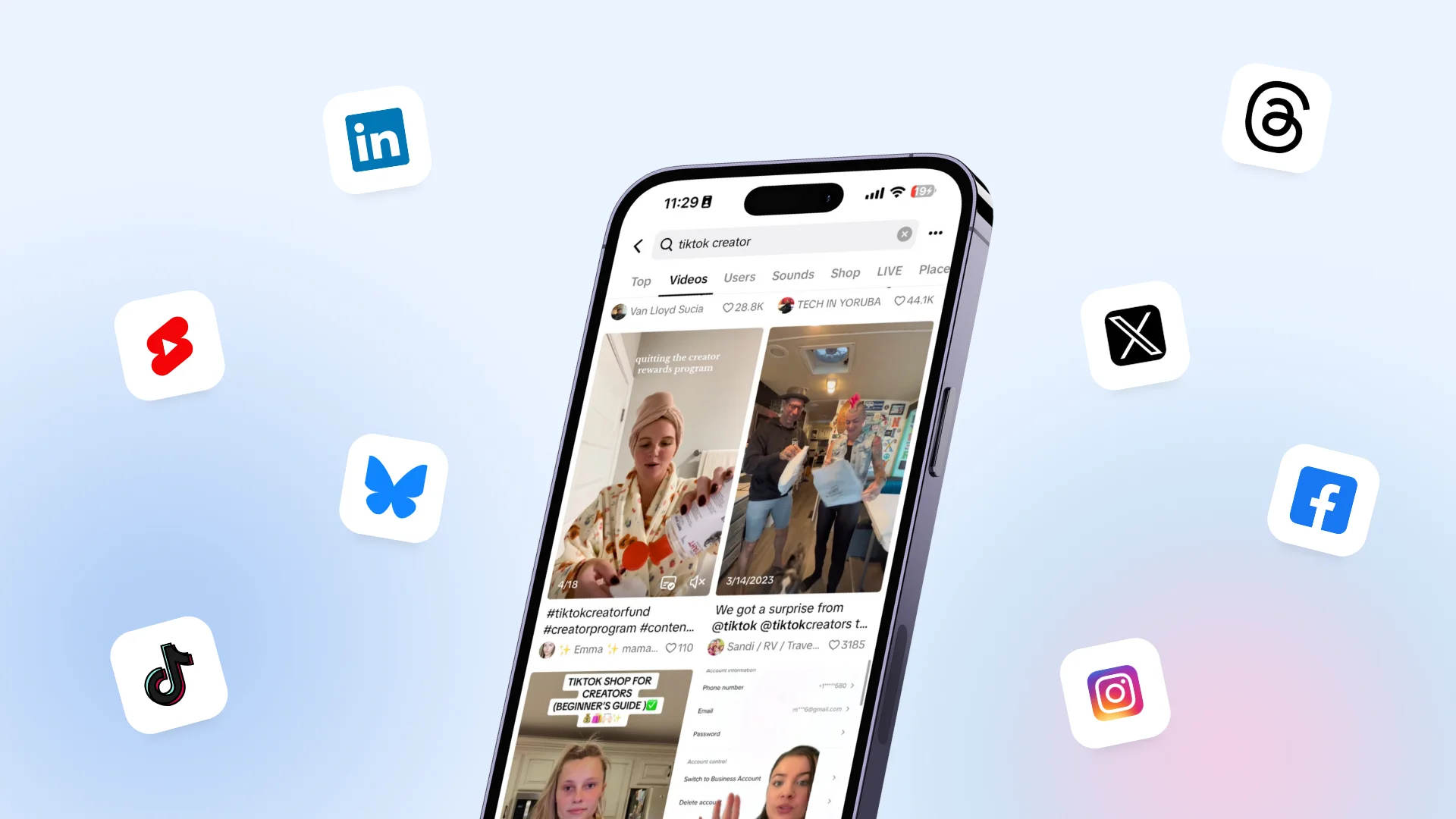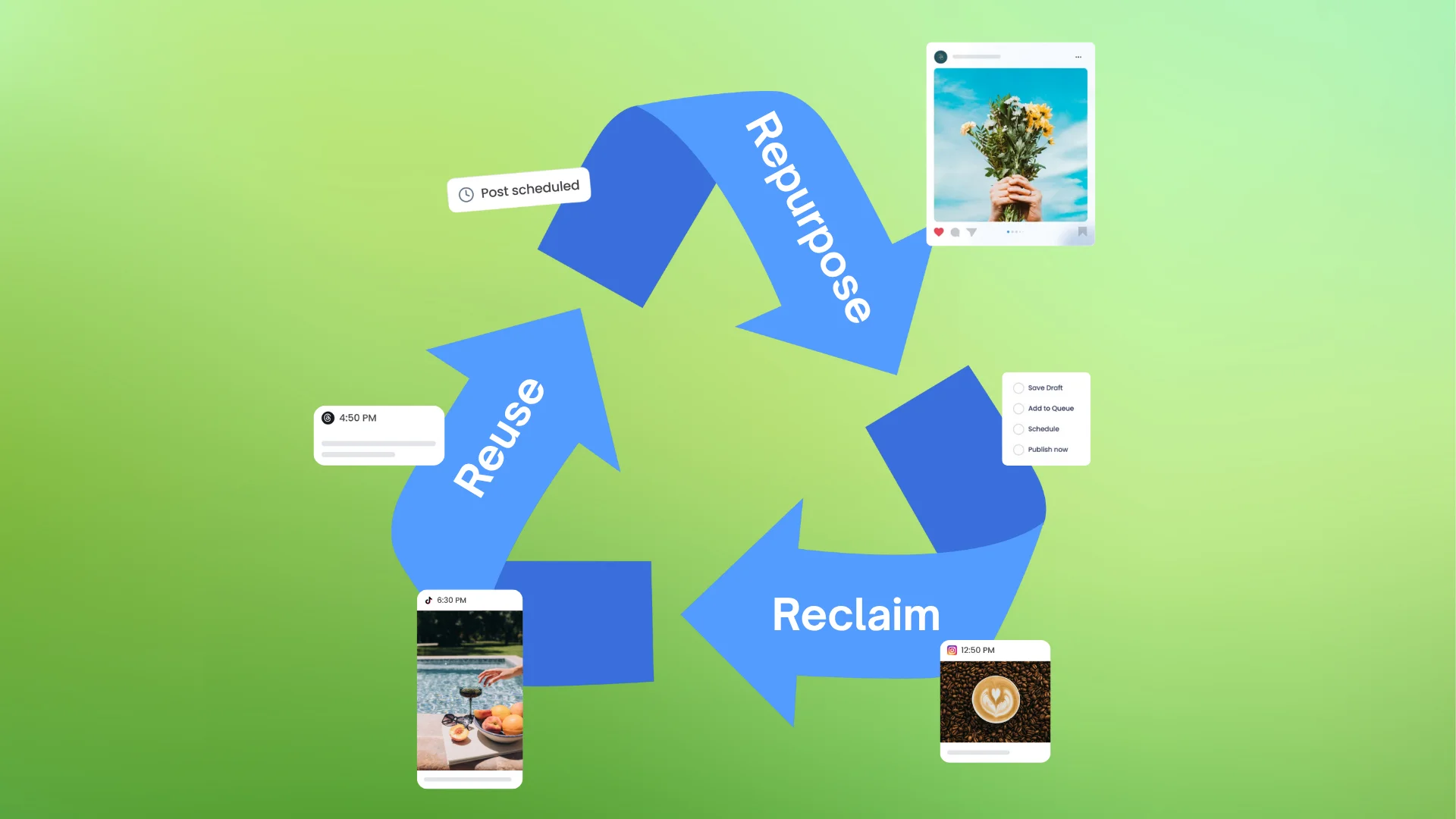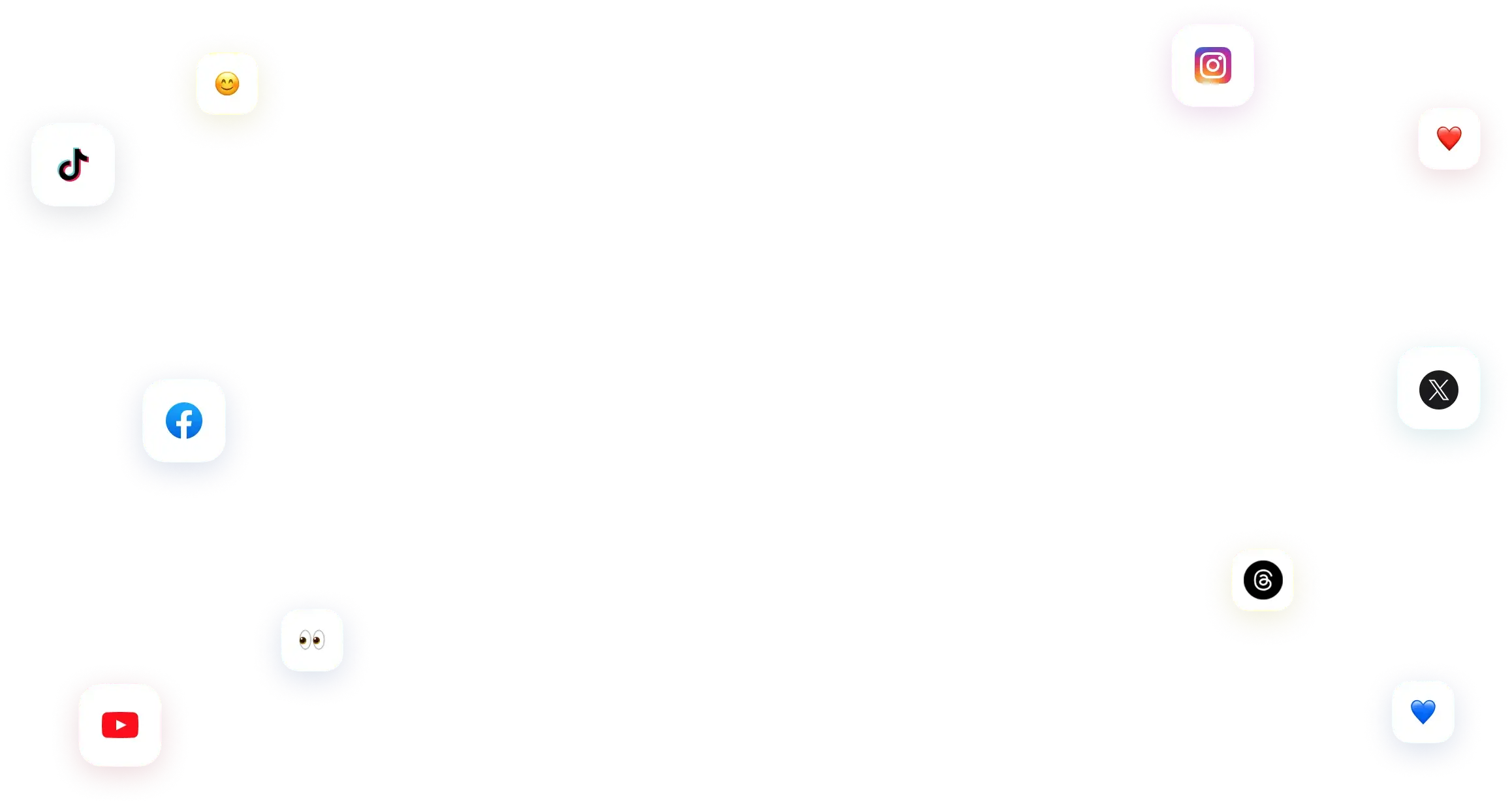New

Turn Your DMs Into Lead Gen!
Learn how to collect lead data from your DMs such as email addresses, phone numbers, and more right from your social inbox. If you are not yet automating your DMs your competitors are outpacing you.

How Something Social Saved 75% of Their Time and Increased Revenue by 15%
See how a fast-growing agency improved operations, cut down hours of manual work, and unlocked new revenue opportunities with Vista Social.
New

50 Unique Social Media Ideas for Consistent Content Creation
Discover 50 unique social media post ideas to engage your audience, grow your brand, and maintain a consistent content strategy with ease!

Mastering Content Reuse: The Key to a Consistent and Sustainable Posting Strategy
Published on August 17, 2025
12 min to read
Analytics for Multi-Location Brands: Comparing Regional Social Performance
Summarize with AI


Table of Content

Managing analytics for multi-location brands?
Yeah… it can feel like trying to herd caffeinated cats.
You’ve got different regions, audiences, and platforms all demanding attention at the same time.
Maybe one store’s Instagram is blowing up, while another location’s Facebook page is so quiet you could hear a pin drop.
Sound familiar?
Here’s the thing—you don’t have to drown in all that data.
With the right analytics, you can cut through the clutter, see what’s actually working, and make sense of it all without the headache.
That’s what we’re diving into here.
I’ll walk you through how to compare regional performance, spot the wins (and the misses), and turn those insights into strategies that actually move the needle for your clients’ brands.
Ready? Let’s go.
Table of contents
What you will learn
- What is analytics for multi location brands?
- Analytics for multi location brands vs social media analysis: What’s the difference?
- Why analytics for multi-location brands is crucial for your social strategy
- Analytics for multi‑location brands: Steps and tips to compare social performance across regions
- How to streamline analytics for multi-location brands with Vista Social
- What to watch out for with analytics for multi location brands
- FAQs on analytics for multi location brands
- Mastering growth through analytics for multi location brands
What is analytics for multi location brands?
Analytics for multi-location brands is the art of keeping tabs on how each brand’s business locations are doing, without losing your mind in a sea of spreadsheets.
Think of it like running multiple mini social media universes under one big brand umbrella.
You’re checking which store’s Instagram is blowing up, which city’s Facebook posts are crickets, and where your clients’ audiences are showing the most love (or, you know… not so much).
Must read: 12 Instagram Analytics Tools for 2025
Multi-location brand analytics is about:
- Tracking each location’s social media or campaign performance
- Comparing results to see who’s killing it and who needs a boost
- Spotting local trends, such as that pumpkin latte everyone in Portland can’t stop posting about
- Sharing what works so all your clients’ locations achieve social media success
Essentially, multi-location business analytics is your game plan for turning scattered stats into insights that help you develop and improve strategies to make every location shine.
Analytics for multi location brands vs social media analysis: What’s the difference?
Social media analysis and multi-location brand analytics may sound like cousins in the marketing family, but these two play different roles at the party.
Analytics for multi-location brands is all about comparing and managing performance across physical locations of the same brand.
- Focus: Which branch, store, or franchise location is performing best (or worst)
- Scope: Often compares multiple local social accounts, ad campaigns, or customer sentiment reports side-by-side
- Goal: Spot regional trends, share winning strategies, and boost underperforming locations
Social Media Analysis, on the other hand, is broader.
- Focus: Measuring how your clients’ overall brands are doing on social platforms such as LinkedIn and YouTube based on reach, engagement, sentiment, conversions, etc.
- Scope: Usually looks at one brand or campaign as a whole, not broken down by location
- Goal: Improve overall social presence, regardless of geography
Must read: 15 LinkedIn Analytics Tools to Boost Your Marketing ROI
The short version?
Multi-location analytics tells you where things are going great (or not), while social media analysis tells you how your clients’ brands are doing overall.
Why analytics for multi-location brands is crucial for your social strategy
Different regions and locations can have different audiences, tastes, and behaviors, and without analytics, you’re just guessing what works where.
That is why analytics is crucial because it helps you with the following.
Pinpoint local wins and replicate them
Analytics lets you identify which social media posts, campaigns, or content types perform best in specific regions, including why they work.
It could be the content’s tone, imagery, timing, or local relevance.
Once you know the secret sauce, you can share or implement these winning tactics with other locations to improve performance and results across the board.
Spot underperformers before they spiral
With multi-location analytics, you can catch early warning signs of low engagement or negative sentiment in certain regions.
It gives you the chance to step in with extra content ideas, boosted ad spend, or targeted community engagement before small dips turn into long-term brand headaches for clients.
Adapt content to local tastes and trends
Not every audience responds to the same messaging.
Location-based insights can help you fine-tune everything, from the words and visuals you use to your posting times.
By tapping into local events, cultural references, or seasonal patterns, you can make each of your clients’ posts feel personal while keeping a consistent brand voice.
Make smarter budget and resource decisions
Analytics tells you exactly where your efforts are paying off, so you can allocate ad spend where it will deliver the highest ROI.
High-performing locations or regions can get the fuel they need to scale, while underperforming ones receive targeted support.
It prevents wasted budget on generic, one-size-fits-all marketing and ad campaigns that don’t convert equally everywhere.
Build a stronger and more cohesive brand image
When you can see performance across all locations, it’s easier to ensure every branch delivers the same quality of content, engagement, and customer experience.
Analytics data helps you align local teams with your clients’ overarching brand goals, while still leaving room for creative local touches.
The result?
A brand that feels unified and reliable, no matter where your clients’ customers connect with them.
Analytics for multi‑location brands: Steps and tips to compare social performance across regions
Comparing social performance across regions isn’t just a “pull the numbers and hope for the best” exercise.
Instead, it’s about finding patterns, uncovering what’s driving results, and giving every location the tools to win.
Whether you’re managing three local pages or three hundred, the steps and tips below help keep you organized and ensure your comparisons lead to action.
1. Set the same metrics for every location
If you don’t standardize what you measure, your comparisons will likely be meaningless.
After all, tracking likes in one location and shares in another is like comparing coffee sales to pizza slices—completely different things.
The key? Decide on a consistent set of Key Performance Indicators (KPIs) for all locations.
Common KPIs include:
- Engagement rate (likes, comments, and shares relative to audience size)
- Reach and impressions
- Follower growth rate
- Click-through rate (CTR)
- Sentiment score
- Conversion rate (if trackable)
Remember, don’t just choose vanity metrics.
Pair at least one quality metric, such as sentiment or customer response time, with your quantity metrics so you get both scale and substance in your reporting.
2. Pull data from all regional accounts in one place
Trying to log in to multiple accounts, download individual reports, and then stitch everything together in Excel?
That’s a fast track to burnout (and typos and other errors).
Instead, centralize all your clients’ social media data.
Using a social media management platform or analytics tool lets you pull performance from every regional account into a single, unified dashboard.
That means you can:
- Compare your clients’ social media account performances side-by-side without the spreadsheet shuffle
- Track trends over time across all locations
- Spot problem areas without having to dig through dozens of files
Choose a tool that lets you automate recurring reports so they hit your inbox on a set schedule.
No more scrambling at the end of the month to collect data from twenty different places on top of creating client-ready reports.
3. Normalize the data for fair comparisons
Bigger locations naturally have more followers, so comparing raw engagement numbers alone is unfair.
For instance, your client’s flagship store in NYC will likely crush the like count every time, but that doesn’t mean their audience connection is stronger.
This is where normalizing data comes in—using percentages and ratios instead of raw numbers.
For example:
- Compare the engagement rate instead of total likes
- Look at clicks per follower instead of total clicks
- Use growth rate instead of total new followers
Additional tip: Always scale data to audience size or post volume.
That way, you can spot which of your clients’ locations are making the most of their audience.
4. Look for patterns and outliers
Once all your clients’ data is standardized, it’s time to play detective.
Look for trends across locations.
Maybe video posts get double the engagement in your client’s West Coast stores, or Instagram Stories perform best in certain cities.
Also, flag the outliers.
An unusually high spike in engagement could mean a campaign worked brilliantly, or that a local team ran a giveaway without telling you (hope not!).
A sudden dip may signal a content gap, a PR issue, or even a platform algorithm change.
Consider using color coding in your analytics reports (green for high performers, red for low performers) so patterns and anomalies stand out instantly.
5. Dig into the WHY behind the numbers
Numbers tell you what happened, but without context, they don’t tell you WHY.
If a client’s location’s engagement drops 30% in a month, you need to know if it’s because they posted less, had staff turnover, dealt with bad weather, or simply shifted focus to another channel.
This is where communication with local teams is gold.
Ask for notes on anything that could impact results, such as local events, promotions, store openings, customer complaints, or even influencer campaigns.
Must read: 13 Influencer Analytics to Boost Your ROI (Free & Paid)
These details can explain spikes, dips, and strange anomalies in your analytics reports.
You can keep a shared “performance log” document where each location can note major happenings throughout the month.
When you review the data, you’ll have the story behind the numbers ready to go.
6. Share insights and apply learnings
The magic of multi-location analytics is in turning discoveries into action.
If a certain type of content kills it in one market, adapt it for others.
If a paid campaign underperforms in a region, tweak the targeting or messaging before rerunning it.
Make sharing insights part of your routine by sending a monthly “what worked” email, hosting quarterly strategy calls, or creating a shared folder with top-performing posts from each location.
It helps you spread good ideas while keeping every team connected to the brand’s bigger picture.
Consider turning your findings into visual “highlight reels” or quick one-page case studies for each winning strategy.
It’s way easier for your clients’ local teams to replicate something they can see in action.
How to streamline analytics for multi-location brands with Vista Social
Try Vista Social for Free
A social media management platform that actually helps you grow with easy-to-use content planning, scheduling, engagement and analytics tools.
Get Started NowRunning social media for a multi-location brand can involve A LOT of data wrangling.
Plus, tracking performance across various accounts, regions, and teams can quickly turn into a spreadsheet nightmare.
The good news is that Vista Social provides a better way to manage it all without the chaos.
The social media platform’s analytics features simplify how you collect, analyze, and act on data, no matter how many locations you’re managing.
Forget jumping between platforms and profiles.
Vista Social lets you connect multiple social profiles across brands, locations, or clients into a single, unified dashboard.
Select the Quick add option on the left-hand menu and click Add a social profile.

Select which profile group to connect the profile to. You can create profile groups for brands or specific locations.

Select the social network you want to connect from (such as your client’s Facebook page or Instagram creator account).
Must read: 10 Facebook Analytics Tools Used by Top Marketing Agencies

The following steps can vary depending on the social channel.
Some social media platforms, such as Pinterest business accounts and X (Twitter) profiles, only need you to authorize Vista Social to access the accounts.
Must read: How to Use Pinterest Analytics to Drive Traffic and Sales
However, other channels may require additional steps to complete the setup.
Once all your clients’ profiles are connected, Vista Social’s social media analytics feature can start pulling data for analysis.
Important note: It takes two to three hours for Vista Social to complete the first data analysis, so if you have just connected the profiles, it’s best to wait a couple of hours before running your first report.
Creating reports for each location doesn’t have to mean repeating the same process a dozen times.
Vista Social’s reporting tools let you generate detailed analytics for individual locations or roll them all into a top-level brand overview. That means more time strategizing and less time formatting.
To generate your report, click Reports on the left-hand side menu and select Run report.

You can also select the Run report option from the content calendar.

Choose your report type.

If you want to run the report immediately, select the specific date range and comparison period.

Vista Social offers several reports that track key metrics to give you valuable insights into each location’s social media performance.
For example, the Social Media Performance report includes cross-channel metrics that help you track the performance of your clients’ specific location across multiple social media platforms (YouTube, Instagram, Facebook, TikTok, and more).
Must read: 15 TikTok Analytics Tools Worth Trying this 2025

You can share your reports with your team and clients by exporting and downloading them as PDF or CSV files, or you can generate a direct link for quick and easy sharing.

Vista Social makes generating and sharing analytics data even easier by letting you schedule your reports.

There’s more!
Vista Social offers report templates that you can easily customize to include the metrics and insights you need in your analytics reports.
Go to the Report builder.

Click + Add template and choose your report type.

Customize your template accordingly.
You can specify the social channel data (Snapchat, Bluesky, Instagram, etc.) you want to include, add texts, sections, and a cover page, edit headings and titles, change the metrics, etc.
Must read: Snapchat Analytics Ultimate Guide: What to Track, FAQs, Etc.

When you’re done, save your template and run, schedule, and share it.
Vista Social’s reports also include predictive analytics insights that help you spot hashtags, topics, and other emerging trends before they become obvious.
Must read: Hashtag Analytics Guide: With Tips, Tools, and Strategies
This way, you can make proactive decisions, not just reactive ones.
The feature includes:
- The best time to post suggestions per location, based on audience engagement trends
- Content performance forecasts to help guide what to post more (or less) of
- Audience growth trends to identify which regions are gaining traction
Vista Social’s other social media management features include:
- Content planning, publishing, and scheduling
- A content calendar
- Review management
- Engagement management with a unified Social Inbox
- Employee advocacy
- DM automations
- Link in bio tool (Vista Page)
- AI Assistant
- A social listening tool
Must read: Social Listening Analytics: A Complete Guide
What to watch out for with analytics for multi location brands
Even the best social analytics tools won’t do you much good if you fall into the common traps below.
Must read: 20+ Social Analytics Tools in 2025: Free And Paid
Focusing only on global averages
A glowing overall engagement rate may feel like a win, but it can easily mask trouble spots in specific regions.
For example, if one high-performing location skews the LinkedIn and Facebook numbers upward, you may overlook your clients’ other locations that underperform.
Must read: LinkedIn Analytics: Complete Guide [w/ metrics, tools, etc.]
Instead of having tunnel vision, break down your clients’ results by location to get the full picture.
This way, every branch gets the attention it deserves.
Using the same KPIs for every market
Not all metrics have the same weight everywhere.
A spike in YouTube Shorts shares in one region may be a game-changer, while in another, it’s comments that signal real impact.
Must read: YouTube Shorts Analytics Explained: An A–Z Breakdown
Adapt your KPIs to each market’s audience behavior, goals, and competitive landscape to measure what truly matters locally.
Ignoring local context
Numbers don’t live in a vacuum.
Holidays, festivals, local news, and even weather events can dramatically affect your clients’ social media data.
For instance, a dip in engagement can be due to a big local sporting event, not a failed campaign.
Weaving in this local context ensures you accurately interpret the performance of your clients’ multiple locations.
Overcomplicating your dashboards
When analytics reports start looking like spaceship control panels, it’s a problem.
Too much clutter makes it harder to spot key insights quickly.
The key is to streamline your dashboards to highlight the most actionable metrics so your team can make decisions without getting lost in the data.
Not acting fast enough
Analytics aren’t just for post-campaign analysis but also a tool for in-the-moment optimization.
If you wait until the campaign is over to review the numbers, you’re missing opportunities to tweak and improve on the fly.
Conduct real-time results tracking and pivot quickly when you see something working (or not working).
Forgetting to align analytics with business goals
Chasing likes, views, and shares is great for bragging rights, but if those metrics don’t tie back to sales, sign-ups, or other core KPIs, you’re missing the bigger picture.
Always connect your analytics to your clients’ measurable business outcomes so you can prove Return on Investment (ROI) and justify your social media marketing spend.
Not standardizing data collection across locations
If each location is tracking and reporting differently, your comparisons won’t be accurate.
Inconsistent naming conventions, time zones, or tagging can lead to messy data that’s hard to trust (and even make sense of).
Create clear, standardized guidelines so every location is feeding consistent, clean data into your analytics system.
FAQs on analytics for multi location brands
Why is multi location reporting more complex than single location reporting?
Managing many locations isn’t just a scale-up of one account. It’s juggling diverse goals, performance data, audiences, and messaging.
Tools for multi-location analytics reporting help centralize dashboards, streamline comparisons and your workflow, and reveal which of your clients’ locations stand out (or need a hand).
How do you customize reporting for different stakeholders like store managers vs. execs?
You will need tiered reporting to personalize data views and insights, such as
- Local statistics for store managers
- Regional summaries for regional directors
- Aggregated brand-level insights for leadership
Tiered reporting helps you avoid overwhelm and keeps everyone across locations focused on what matters most.
What are the common challenges in multi location analytics?
One of the biggest challenges of multi-location analytics is scaling.
It can be tricky since you’re balancing branding with local personality, syncing regional reporting, ensuring data accuracy, and avoiding information overload, especially when using tools not built for complex analytics across multiple locations.
Mastering growth through analytics for multi location brands
Getting a clear view of your clients’ regional social performance is one of the secret sauces for making each location thrive.
With the right data, you can spot trends, double down on what’s working, and fix what’s not before it impacts your clients’ bottom line.
Vista Social makes it easy to compare, track, and optimize performance across all your clients’ locations from one powerful dashboard.
Ready to uncover the full social media potential of your clients’ multi-location brands?
Create your Vista Social account today and turn insights into action.
About the Author
Content Writer
Jimmy Rodela is a social media and content marketing consultant with over 9 years of experience, with work appearing on sites such as Business.com, Yahoo, SEMRush, and SearchEnginePeople. He specializes in social media, content marketing, SaaS, small business strategy, marketing automation, and content development.
Read with AI
Save time reading this article using your favorite AI tool
Summarize with AI
Never Miss a Trend
Our newsletter is packed with the hottest posts and latest news in social media.

You have many things to do.
Let us help you with social media.
Use our free plan to build momentum for your social media presence.
Or skip ahead and try our paid plan to scale your social media efforts.
P.S. It will be a piece of cake 🍰 with Vista Social
Subscribe to our Newsletter!
To stay updated on the latest and greatest Social Media news. We promise not to spam you!


